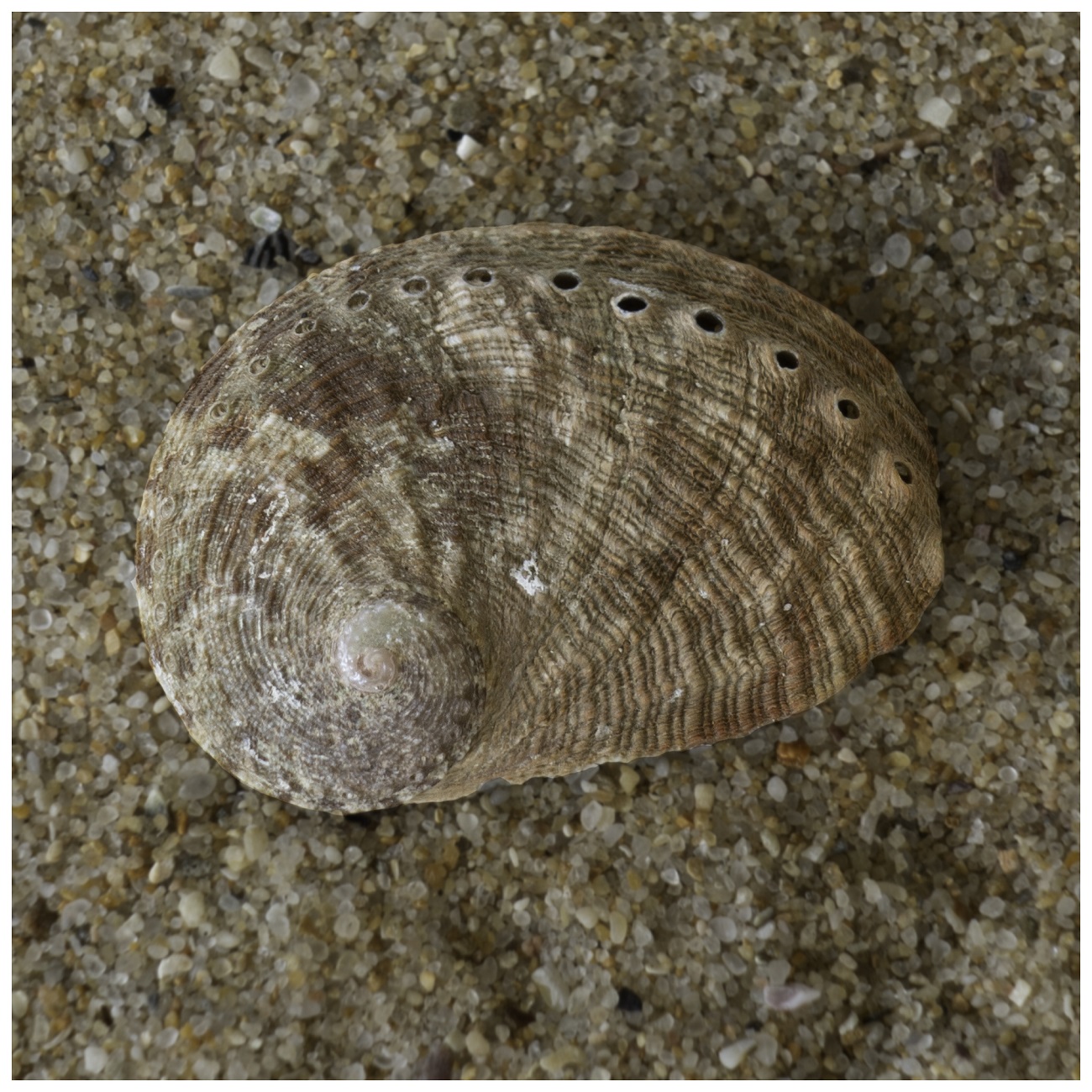Did you guess correctly?
This is an abalone shell. It can be identified by its flat open shape, the row of holes along one side and beautiful mother of pearl interior. It may not look like a snail shell, but it is a spiral shell, just a lot flatter than other snail shells we see on the beach!
There as several abalone species living on rocky reefs along Victoria’s coastline. The two key ones are the green-lipped abalone and black-lipped abalone. Their name comes from the coloured edges of their foot!
Abalone are well suited to life on the reefs. Their open shell means that they have a large foot to grip and move about on the rocks. Like other snails, they have a rasp like tongue, called a radula, that scrapes the algae from the rocks. The radula’s teeth may be broken or wear out over time and when this happens, they are discarded and replaced by new ones. Abalone grow new teeth for their entire lives!
The distinctive holes in the shell serve several purposes. An Abalone draws water in under its shell, over its gills and out through the holes. It also excretes its wastes and releases its eggs or sperm through the holes. As the abalone grows it enlarges the shell by adding to the edges while also adding to the thickness of the shell. New holes will be created as older ones are covered over. The mother of pearl on the inside of the shell is continually being deposited, providing a smooth interior for the snail.
Abalone reproduce by releasing sperm and eggs into the water where fertilisation occurs. Females can release 500,000 eggs when they detect the presence of sperm in the water. The young drift in the currents before settling back onto the reef. They are food for fish and crabs, so to avoid them they will congregate in tiny crevices in the reef, only coming out at night to feed. Adult abalone have very strong shells, so they tend to remain out on the reef rather than seek refuge in crevices.
Abalone are a very popular food and are commercially harvested along Victoria coastline. In the 2019/20 season, over 650 tonnes of black-lipped abalone and 4.8 tonnes of green-lipped abalone will be harvested. Abalone are also farmed in Victoria’s south-west.
This video looks at abalone being farmed in California and includes interesting footage of adult abalone.

If you would like to learn more about abalone and the huge diversity of life that can be found in the shallows along our shorelines please contact Education Director Mandy Robertson on education@dolphinresearch.org.au








